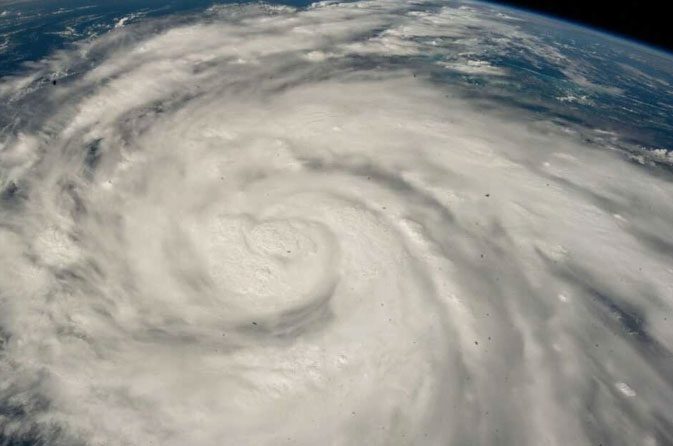When Hurricane Ian made landfall in Southwest Florida, USA in September 2022, it released several bacteria from the genus Vibrio that can be deadly to humans.
In Lee County, Florida, as of October 2022, there were 38 reported infections and 11 fatalities. This troubling statistic is related to vibriosis, a disease caused by vibrio bacteria. It occurred a few weeks after Hurricane Ian swept through the state starting on September 28, 2022.
At the time of the event, local media provided extensive coverage on the apparent link between the sharp increase in infections from “flesh-eating bacteria” and the devastating natural phenomenon.
However, scientists were unable to definitively prove this connection.

Hurricane Ian captured from the International Space Station (ISS). (Photo: NASA).
Unraveling the Mystery
A year later, this hypothesis was clarified by scientists from the University of Maryland, the University of Florida, and the microbiome company EzBiome. They analyzed DNA in water and oyster samples collected from the region in October 2022.
The results revealed the presence of pathogens from Vibrio parahaemolyticus and Vibrio vulnificus bacteria.
“We were surprised to detect the presence of these pathogens without any difficulty,” the research team stated.
The Institute for Advanced Computer Studies at the University of Maryland has been studying vibrios for 50 years. Vibrios naturally occur in the ocean, where they coexist with crustaceans, plankton, and bivalve animals.
However, when these bacteria come into contact with humans, certain species can cause infections. The resulting effects depend on the specific type of Vibrio involved and the severity of the infection.
Flesh-Eating Bacteria
While Vibrio parahaemolyticus can cause gastroenteritis and wound infections, the species Vibrio vulnificus is much more frightening, as it can lead to a condition known in medical terms as “necrotizing fasciitis”, which destroys tissue and kills 1 in 5 infected individuals.
The study explains: “Vibriosis is contracted by consuming raw or undercooked seafood or through exposure of open wounds to seawater. However, since vibrios thrive in warm saline waters, storms and flooding can increase the risk of human exposure.”
Several conditions during and after Hurricane Ian facilitated the growth of Vibrio bacteria. The authors particularly highlighted rainfall, changes in sea surface temperature, and chlorophyll concentrations in the ocean.
In fact, all these factors can cause phytoplankton blooms in the water, leading to an abundance of bacteria.
Climate Change and Deadly Infections
According to the research, as the oceans warm, there is an increased risk of producing wetter and stronger storms like Hurricane Ian, potentially leading coastal communities to witness a rise in Vibrio infections in the future.
Rita Colwell, the study’s author, explains: “These vibrios usually thrive at temperatures between 15-40 degrees Celsius, so as temperatures rise, they multiply more rapidly.”
“Warming seawater, mixed with freshwater, creates optimal salinity. This is conducive for the growth of these bacteria, raising serious concerns.”
Moreover, southern climate regions like Florida will not be the only areas affected by this threat.
In August 2023, three people died in New York and Connecticut (northeast USA) after being infected by flesh-eating bacteria. The researcher emphasized: “Water in Florida is much warmer than in Chesapeake Bay, but water is warming along much of the East Coast.”
The authors call for ongoing research to quantify the prevalence of Vibrio bacteria by location, season, and environmental conditions. According to Rita Colwell, this scientific work is not only crucial for public health but also represents an important step in understanding climate change.


















































